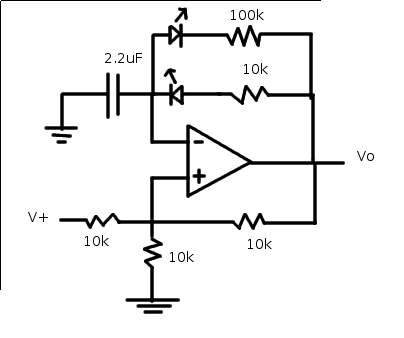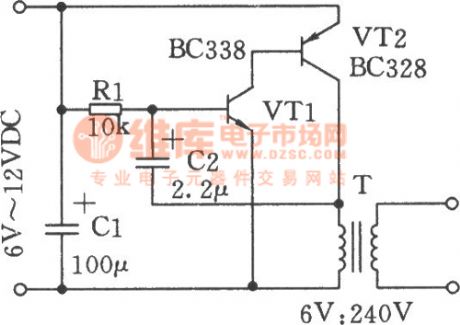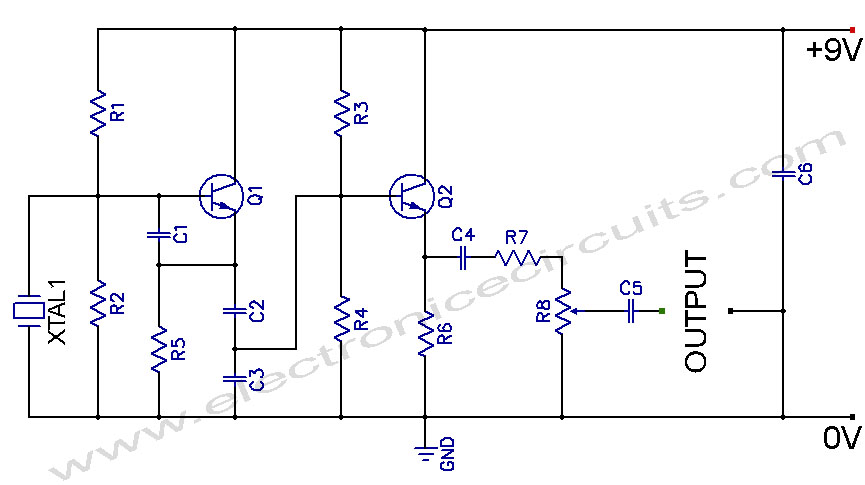
pulse generator circuit

The relaxation oscillator generates a relatively consistent square wave. By altering the duty cycle, the effect can be visualized using LEDs. The following variation of the relaxation oscillator circuit can be assembled.
The relaxation oscillator circuit typically consists of a resistor, capacitor, and a transistor or operational amplifier configured to produce a square wave output. In this variation, the duty cycle can be modified by adjusting the resistance and capacitance values, which influences the charging and discharging time of the capacitor.
To visualize the changes in duty cycle, LEDs can be incorporated into the circuit. When the output switches states, the LEDs will illuminate, providing a clear indication of the oscillation frequency and duty cycle. The circuit can be designed using a 555 timer IC in astable mode, where the duty cycle is determined by the ratio of the resistances and capacitance used in the timing configuration.
By selecting different resistor values (R1 and R2) and a capacitor (C1), the frequency and duty cycle can be manipulated. The duty cycle can be calculated using the formula:
Duty Cycle (%) = (R1 + R2) / (R1 + 2R2) * 100
This allows for precise control over the output waveform characteristics. The circuit should be powered by a suitable DC voltage source, and the output can be taken from the discharge pin of the 555 timer.
The schematic should indicate the connections for the resistors, capacitor, and the LED, ensuring that the LED is placed in series with a current-limiting resistor to prevent excessive current flow. By observing the LED's brightness and on/off timing, the effects of varying the duty cycle can be effectively demonstrated.With the relaxation oscillator, we basically achieved a fairly regular square wave. Let's change the duty cycle (and visualize the effect with LEDs). Wire up the following variation on the relaxation oscillator circuit 🔗 External reference
The relaxation oscillator circuit typically consists of a resistor, capacitor, and a transistor or operational amplifier configured to produce a square wave output. In this variation, the duty cycle can be modified by adjusting the resistance and capacitance values, which influences the charging and discharging time of the capacitor.
To visualize the changes in duty cycle, LEDs can be incorporated into the circuit. When the output switches states, the LEDs will illuminate, providing a clear indication of the oscillation frequency and duty cycle. The circuit can be designed using a 555 timer IC in astable mode, where the duty cycle is determined by the ratio of the resistances and capacitance used in the timing configuration.
By selecting different resistor values (R1 and R2) and a capacitor (C1), the frequency and duty cycle can be manipulated. The duty cycle can be calculated using the formula:
Duty Cycle (%) = (R1 + R2) / (R1 + 2R2) * 100
This allows for precise control over the output waveform characteristics. The circuit should be powered by a suitable DC voltage source, and the output can be taken from the discharge pin of the 555 timer.
The schematic should indicate the connections for the resistors, capacitor, and the LED, ensuring that the LED is placed in series with a current-limiting resistor to prevent excessive current flow. By observing the LED's brightness and on/off timing, the effects of varying the duty cycle can be effectively demonstrated.With the relaxation oscillator, we basically achieved a fairly regular square wave. Let's change the duty cycle (and visualize the effect with LEDs). Wire up the following variation on the relaxation oscillator circuit 🔗 External reference





